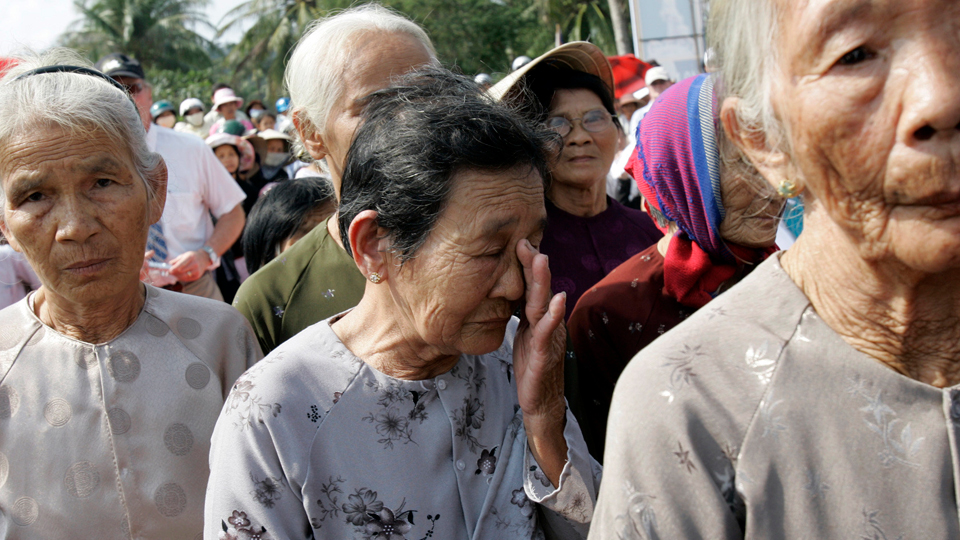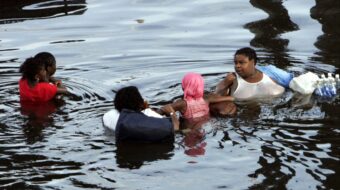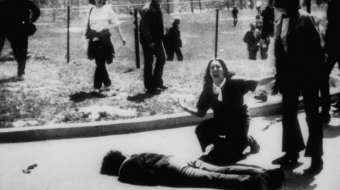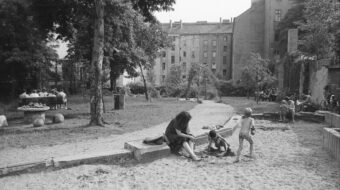
On March 16, 1968, American soldiers brutally slaughtered more than 500 unarmed civilians at My Lai, one of a cluster of small villages located near the northern coast of South Vietnam. This incident followed the embarrassment of the broad Tet Offensive, which showed that the Viet Cong (VC) had broad support everywhere in the country and was able to inflict severe damage to the American invading forces and the puppet South Vietnamese government. Returning to guerrilla tactics, the VC tended to avoid direct encounters with U.S. forces.
Earlier that month, a platoon called Charlie Company received word that VC guerrillas had taken cover in the Quang Ngai village of Son My. The platoon entered one of the village’s four hamlets, My Lai 4, on a search-and-destroy mission on the morning of March 16. Instead of guerrilla fighters, they found unarmed villagers, most of them women, children and old men.
The soldiers had been advised by U.S. Army command that all persons found in My Lai could be considered VC or active VC sympathizers, and were told to destroy the village—one more example in practice of the operating theory “We had to destroy the village to save it.”
They acted with extraordinary brutality, raping and torturing villagers before killing them and dragging dozens of people, including young children and babies, into an irrigation ditch and executing them with automatic weapons. Troops also destroyed buildings, livestock, household pets and crops.
Charlie Company’s commander was Capt. Ernest Medina, and its 1st Platoon was led by Lieut. William Calley.
The massacre only ended when an Army helicopter pilot, Warrant Officer Hugh Thompson, landed his aircraft between the soldiers and the retreating villagers and threatened to open fire if they continued their attacks. He and other crew members were subsequently awarded the Soldier’s Medal for acts of extraordinary bravery.
The events at My Lai were covered up by high-ranking army officers until investigative journalist Seymour Hersh broke the story. Soon, My Lai was front-page news and an international scandal.
Sgt. Ron Haeberle, a U.S. Army photographer attached to Charlie Company, documented the events both on his official black-and-white camera and on his personal color camera. Haeberle published his personal photos in the Cleveland Plain Dealer and Life magazine, showing a trail strewn with the bodies of dead women, children, and infants, and terrified women and children moments before they were shot. These photographs served to galvanize the anti-Vietnam War movement and would become some of the most recognizable images of the war.
By 11:00 that morning, as many as 500 Vietnamese civilians had been killed. Medina ordered Charlie Company to break for lunch and informed his superiors that scores of VC had been killed in the operation. The sole U.S. casualty was a soldier who accidentally shot himself in the foot.
The cover-up
Upon his return to base that morning, Hugh Thompson reported that he had observed the widespread killing of civilians in My Lai, which Vietnamese officials confirmed. But officially the My Lai action was described as a resounding success against the VC enemy, and an “investigation” labeled Thompson’s report as false. Thompson found himself assigned to increasingly dangerous missions with inadequate air cover; he was shot down five times, breaking his back in the final crash.
By late April 1968 Ronald Ridenhour, a helicopter door gunner who had trained with members of Charlie Company, had begun pursuing his own investigation after hearing of the massacre from troops who had been present that day. After his separation from the Army, on March 29, 1969, Ridenhour mailed a report of his eyewitness findings on the incident to members of Congress, the Pentagon, and others in Washington. This letter sparked official investigations of both the massacre itself and the subsequent cover-up. Ridenhour, Medina, Thompson, and Calley were among those interviewed, and in September 1969 Calley was charged with the murder of 109 Vietnamese civilians.
In November 1969 journalist Seymour Hersh’s Pulitzer Prize-winning account of “point-blank murder” at My Lai appeared in newspapers along with Haeberle’s photos, shocking the world. Calley, Medina and ten others were charged with crimes in connection to My Lai. With the exception of Calley, all of the others were acquitted or had their cases dismissed. In stark contrast with the defendants at the Nuremberg trials that followed World War II, members of Charlie Company were successfully able to argue that they simply had been following orders on March 16, 1968.
At the conclusion of Calley’s court-martial in March 1971, he was found guilty of the murder of 22 Vietnamese civilians and sentenced to life in prison. Many Americans, however, believed that Calley had been made a scapegoat, and in 1974 he was paroled. The massacre and other atrocities revealed during the trial divided the U.S. public and contributed to growing disillusionment with the war. By 1973 direct involvement by American forces had ended.
A parallel inquiry by Lieut. Gen. William Peers probed the cover-up of the My Lai incident. His staff conducted hundreds of interviews, collecting tens of thousands of pages of testimony at a furious pace, facing a two-year statute of limitations. On March 14, 1970, two days before the time limit was up, Peers submitted his final report, concluding that “at every command level from company to division, actions were taken or omitted which together effectively concealed from higher headquarters the events which transpired” at My Lai. All cases against the 30 individuals singled out by Peers for having failed to report or fully investigate the unlawful killing of civilians were dismissed due to lack of evidence, except for one high-ranking officer, who was found not guilty on December 18, 1971.
In 1976, just a year after the fall of Saigon, the first memorial was erected at My Lai—officially the Son My Vestige Area. Artifacts recovered from the area and Haeberle’s photographs figure prominently in the museum’s collection, and a memorial wall lists the names of hundreds of victims.
In 2009, at a Kiwanis Club gathering in Columbus, Ga., William Calley publicly apologized for the first time, saying, “There is not a day that goes by that I do not feel remorse for what happened that day in My Lai. I feel remorse for the Vietnamese who were killed, for their families, for the American soldiers involved and their families. I am very sorry.”
Sources: This day in history, Michael Ray in Britannica.










